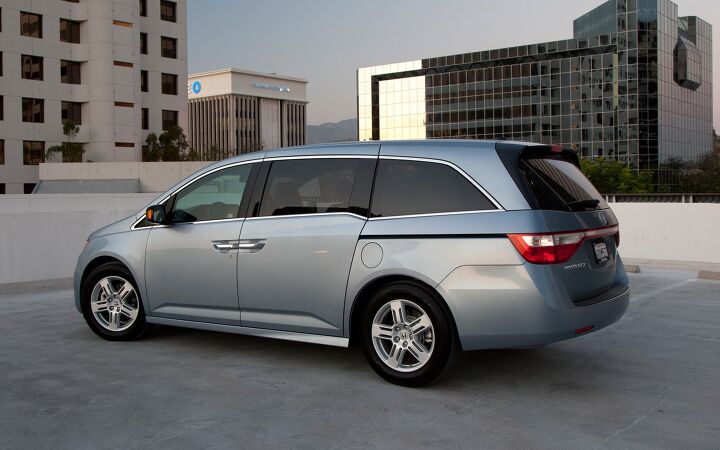IIHS: US Driver Fatalities Fall One-Third In Three Years
Per a report by the Insurance Institute for Highway Safety, driver fatalities in the United States have fallen by a third over the past three years.
Automotive News says the report’s findings come after the seemingly endless recall parade of 2014, which saw 60.5 million vehicles in the U.S. brought in for repair work, an all-time industry record.
The IIHS added that nine vehicles made in 2011 or earlier had no fatalities recorded between 2009 and 2012: Audi A4 4WD, Honda Odyssey, Kia Sorento 2WD, Lexus RX 350 4WD, Mercedes-Benz GL-class 4WD, Subaru Legacy 4WD, Toyota Highlander hybrid 4WD, Toyota Sequoia 4WD and Volvo XC90 4WD. The list marks an improvement in safety according to the non-profit group, when only eight years ago, “there were no models with driver death rates of zero.”
However, while most of the vehicles with zero fatalities are SUVs and crossovers, most of the vehicles with the highest number of deaths over the same period are compacts like the Hyundai Accent, Nissan Versa and Kia Rio. The report confirms this, proclaiming that “with some exceptions, death rates tend to go down as size goes up.” This is a change from a decade earlier, when SUVs and crossovers had higher numbers of deaths due to a lack of stability controls and other systems meant to prevent roll-over.
As far as total elimination of traffic fatalities in the U.S. goes, IIHS executive vice president and chief research officer David Zuby says such a thing is decades away, and would require not only continued improvements in vehicle safety, but changes in road construction and public safety policy, as well. The report adds that the Great Recession helped to contribute toward the decline in deaths, warning that as the economy continues its recovery, and without said policy changes, the decline could reverse.
Seattle-based writer, blogger, and photographer for many a publication. Born in Louisville. Raised in Kansas. Where I lay my head is home.
More by Cameron Aubernon
Latest Car Reviews
Read moreLatest Product Reviews
Read moreRecent Comments
- MaintenanceCosts This is refreshing. Excess car storage which brainless local zoning rules forced the builders of this mall to include, but which normally sits empty, is actually being used for car storage!
- MaintenanceCosts Nice car if you can get it properly sorted, but the level of safety tech doesn't seem quite enough for a young driver on today's brodozer-infested highways.
- VoGhost OK. But if Subaru really wants this to sell, they'd make it as a PHEV with enough American content to get buyers $7,500 back on their federal taxes. Otherwise, this really doesn't stand out in a world of RAV4s and CR-Vs.
- VoGhost Tesla has an average of 28 days of inventory, less than half industry average.
- FreedMike Ah, Chesterfield Mall...my old teenage stomping grounds. Bummer what happened to it, that's for sure. But that's what happens when the city council approves not one, but two "premium" outlet malls right down the road to be built. That killed this mall dead.And in case anyone's interested...yes, Teslas and other EVs are very popular in that neighborhood.


































Comments
Join the conversation
"\3 For example, IIHS (1991) reported that the automobile model with the highest fatality rate in the late 1980's was the Chevrolet Corvette Coupe, with 4.7 deaths per 10,000 registered vehicles. The Volvo 240 had the lowest fatality rate for that period at 0.5 deaths per 10,000 registered vehicles." http://www.gpo.gov/fdsys/pkg/GAOREPORTS-PEMD-95-4/html/GAOREPORTS-PEMD-95-4.htm If I remember correctly, that particular car had a couple of years without fatalities 3-4 decades ago already.
If we wanted to further reduce deaths and permanent severe disability from auto accidents the cheapest way possible, we would request everyone in an automobile wear a helmet.